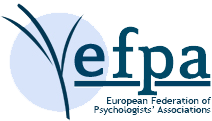EuroPsy and Bologna
What is Bologna?
The Bologna Declaration was signed in June 1999 by 29 ministers of higher education from European countries as a ‘pledge by 29 countries to reform the structures of their higher education systems in a convergent way’ (Bologna Declaration p.1). The goal was to create a European Higher Education Area (EHEA) by 2010 which was intended to promote greater convergence of higher education systems, and to encourage mobility both of students and of faculty.
The Bologna Declaration to create the EHEA involved six key thematic objectives:
- adoption of a system of easily readable and comparable degrees
- adoption of a two cycle system (undergraduate and graduate). This has become based on two (three) consecutive cycles: the undergrdauate cycle (Bachelor) lasting three years, the graduate cycle (Master) of two years, and the Doctorate cycle.
- establishment of a system of credits (the European Credit Transfer System or ECTS) as a common students’ workload measure and as a means of promoting student mobility
- promotion of mobility for students, teachers, researchers, and administrative staff
- promotion of European co-operation in quality assurance with a view to developing comparable criteria and methodologies of teaching and learning assessment
- promotion of the European dimension in higher education, in relation to curricula, inter-institutional co-operation, mobility schemes and integrated programmes of study
What is the Sorbonne Agreement?
The Sorbonne Agreement was signed by the ministers of four countries (France, Germany, Italy, UK) in 1998 at a conference organised at the Sorbonne to commemorate the 800th anniversary of the University of Paris. The Agreement, entitled the Joint Declaration on Harmonisation of the Architecture of the European Higher Education System, invited governments and insitutions to ‘harmonise’ their university provision.
How many countries have signed up to the Bologna Agreement?
There are now 48 countries which have signed up to the Bologna Agreement.
What is the effect of the Bologna Agreement?
The Bologna Agreement has had far reaching effects. Almost all of the signatory countries have harmonised their university degree structures to the Bologna model of 3 years Bachelor, 2 years Master and 3 years Doctorate degrees.
What is the relationship between EuroPsy and Bologna?
There is no direct relationship between EuroPsy and Bologna. However, EuroPsy has been influenced by Bologna, and has been helped by the Bologna implementation. The EuroPsy standard is defined by a 5 year university study (most frequently a 3 year Bachelor followed by a 2 year Masters degree); this follows the Bologna model.

